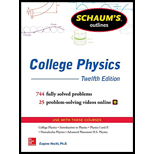
Concept explainers
Draw diagrams to indicate qualitatively the position, nature, and size of the image formed by a converging lens of focal length f for the following object distances: (a) infinity, (b) greater than 2f, (c) equal to 2f, (d) between 2f and f, (e) equal to f, (f) less than f.
(a)
The position, nature, and size of the image formed by a converging lens of focal length
Answer to Problem 15SP
Solution:
The image is formed at the focus and is inverted, real, and highly diminished.
Explanation of Solution
Introduction:
Employ the rules of ray diagram for a convex lens to determine the position, nature, and size of the image formed.
Explanation:
The resulting ray diagram for an object kept at infinity is drawn below:
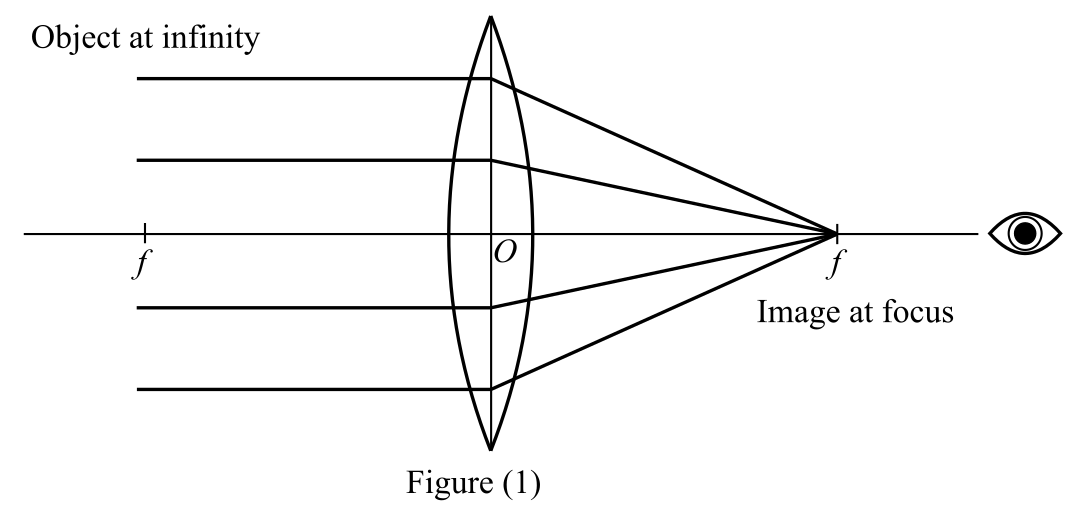
From the ray diagram given above, it is clear that the image is formed at the focus and is inverted, real, and highly diminished.
Conclusion:
Therefore, when the object is kept at an infinite distance from the lens, the image is formed at the focus and is inverted, real, and highly diminished.
(b)
The position, nature, and size of the image formed by a converging lens of focal length
Answer to Problem 15SP
Solution:
The image is formed between
Explanation of Solution
Introduction:
Employ the rules of ray diagram for a convex lens to determine the position, nature, and size of the image formed.
Explanation:
The resulting ray diagram for an object kept at a distance greater than
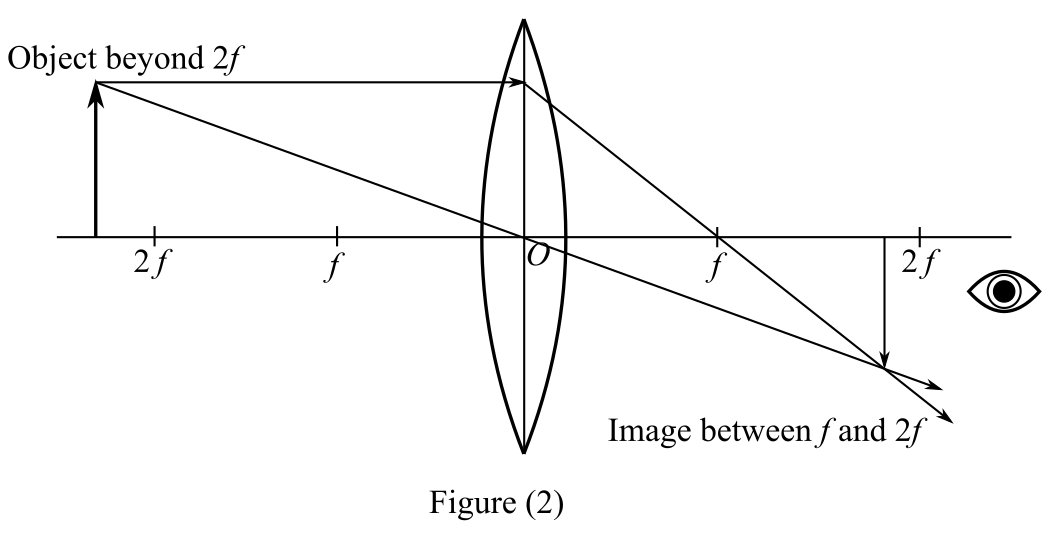
From the ray diagram given above, it is clear that the image is formed between
Conclusion:
Therefore, when the object is kept at a distance greater than
(c)
The position, nature, and size of the image formed by a converging lens of focal length
Answer to Problem 15SP
Solution:
The image is formed at
Explanation of Solution
Introduction:
Use the rules of ray diagram for a convex lens to determine the position, nature, and size of the image formed when the object is placed at
Explanation:
The resulting ray diagram for an object kept at a distance of
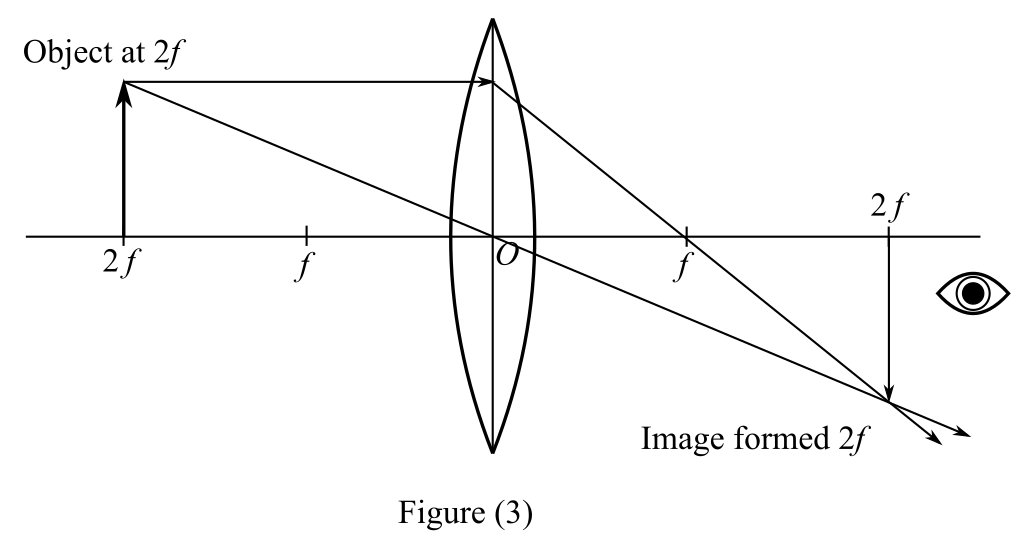
From the ray diagram given above, it is clear that the image is formed at
Conclusion:
Therefore, then the object is kept at a distance of
(d)
The position, nature, and size of the image formed by a converging lens of focal length
Answer to Problem 15SP
Solution:
The image is formed beyond
Explanation of Solution
Introduction:
Here, we shall employ the rules of ray diagram for a convex lens to determine the position, nature, and size of the image formed.
Explanation:
The resulting ray diagram for an object kept at a distance between
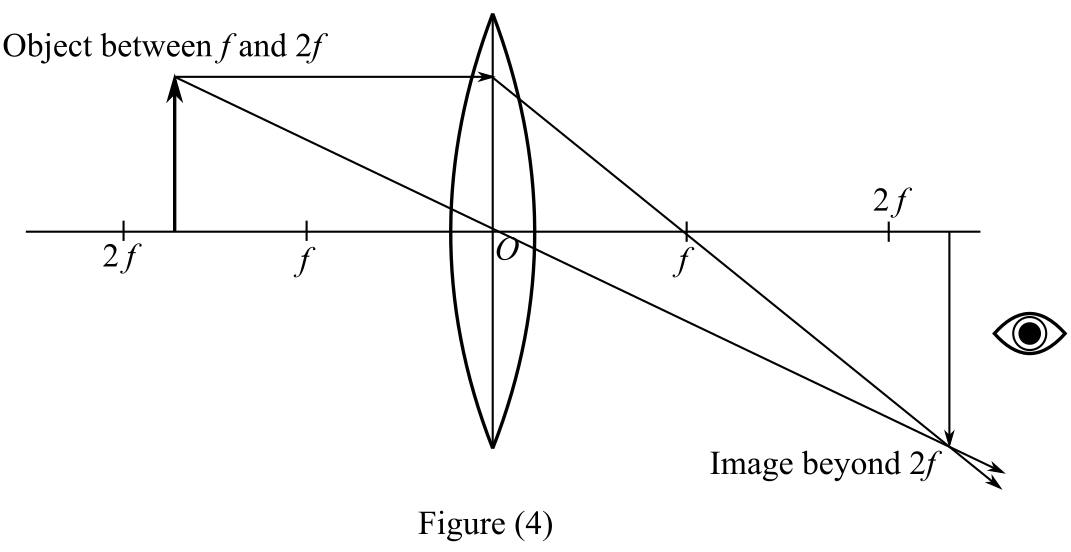
From the ray diagram given above, it is clear that the image is formed beyond
Conclusion:
Therefore, when the object is kept at a distance between
(e)
The position, nature, and size of the image formed by a converging lens of focal length
Answer to Problem 15SP
Solution:
The image is formed at infinity and is erect, virtual, and magnified.
Explanation of Solution
Introduction:
Use the rules of ray diagram for a convex lens to determine the position, nature, and size of the image formed, when the object is kept at a distance
Explanation:
The resulting ray diagram for an object kept at a distance
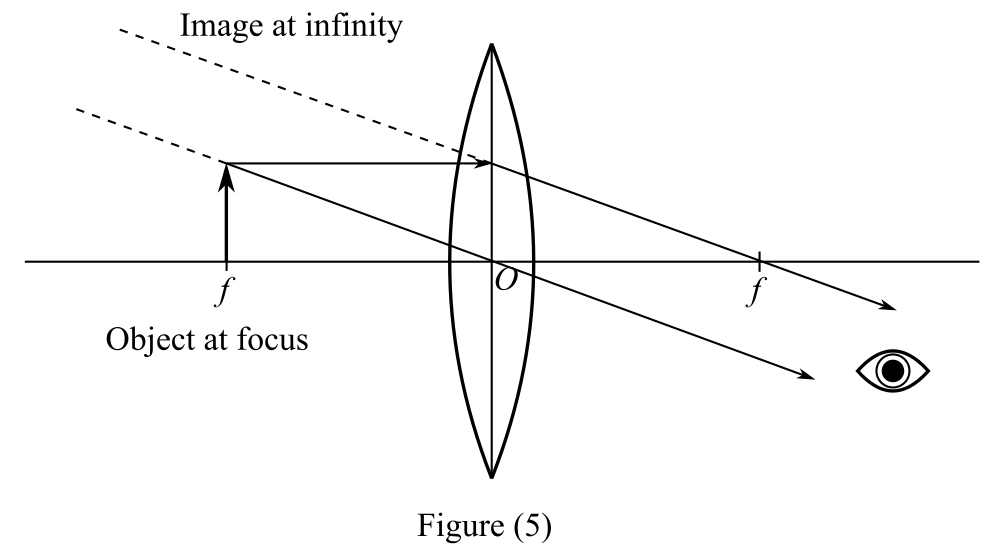
From the ray diagram given above, it is clear that the image is formed at infinity and is erect, virtual, and magnified.
Conclusion:
Therefore, when the object is kept at a distance
(f)
The position, nature, and size of the image formed by a converging lens of focal length
Answer to Problem 15SP
Solution:
The image is formed beyond
Explanation of Solution
Introduction:
Here, we shall employ the rules of ray diagram for a convex lens to determine the position, nature, and size of the image formed.
Explanation:
The resulting ray diagram for an object kept at a distance less than

From the ray diagram given above, it is clear that the image is formed beyond
Conclusion:
Therefore, when the object is kept at a distance less than
Want to see more full solutions like this?
Chapter 38 Solutions
Schaum's Outline of College Physics, Twelfth Edition (Schaum's Outlines)
- (a) For a spherical capacitor with inner radius a and outer radius b, we have the following for the capacitance. ab C = k₂(b- a) 0.0695 m 0.145 m (8.99 × 10º N · m²/c²)( [0.145 m- 0.0695 m × 10-11 F = PF IIarrow_forwardA pendulum bob A (0.5 kg) is given an initialspeed of vA = 4 m/s when the chord ishorizontal. It then hits a stationary block B (1kg) which then slides to a maximum distanced before it stops. Determine the value of d.The coefficient of static friction between theblock and the plane is μk = 0.2. The coefficientof restitution between A and B is e = 0.8.Ans: d=1.0034 marrow_forwardFigure 29-43 Problem 12. ••13 In Fig. 29-44, point P₁ is at distance R = 13.1 cm on the perpendicular bisector of a straight wire of length L = 18.0 cm carrying current i = 58.2 mA. (Note that the wire is not long.) What is the magnitude of the magnetic field at P₁ due to i? P2° R R Larrow_forward
- Checkpoint 1 The figure shows the current i in a single-loop circuit with a battery B and a resistance R (and wires of neg- ligible resistance). (a) Should the emf arrow at B be drawn pointing leftward or rightward? At points a, B C R b, and c, rank (b) the magnitude of the current, (c) the electric potential, and (d) the electric potential energy of the charge carriers, greatest first.arrow_forwardPls help ASAParrow_forwardPls help asaparrow_forward
 University Physics Volume 3PhysicsISBN:9781938168185Author:William Moebs, Jeff SannyPublisher:OpenStax
University Physics Volume 3PhysicsISBN:9781938168185Author:William Moebs, Jeff SannyPublisher:OpenStax Principles of Physics: A Calculus-Based TextPhysicsISBN:9781133104261Author:Raymond A. Serway, John W. JewettPublisher:Cengage Learning
Principles of Physics: A Calculus-Based TextPhysicsISBN:9781133104261Author:Raymond A. Serway, John W. JewettPublisher:Cengage Learning Physics for Scientists and Engineers: Foundations...PhysicsISBN:9781133939146Author:Katz, Debora M.Publisher:Cengage Learning
Physics for Scientists and Engineers: Foundations...PhysicsISBN:9781133939146Author:Katz, Debora M.Publisher:Cengage Learning Physics for Scientists and EngineersPhysicsISBN:9781337553278Author:Raymond A. Serway, John W. JewettPublisher:Cengage Learning
Physics for Scientists and EngineersPhysicsISBN:9781337553278Author:Raymond A. Serway, John W. JewettPublisher:Cengage Learning Physics for Scientists and Engineers with Modern ...PhysicsISBN:9781337553292Author:Raymond A. Serway, John W. JewettPublisher:Cengage Learning
Physics for Scientists and Engineers with Modern ...PhysicsISBN:9781337553292Author:Raymond A. Serway, John W. JewettPublisher:Cengage Learning Glencoe Physics: Principles and Problems, Student...PhysicsISBN:9780078807213Author:Paul W. ZitzewitzPublisher:Glencoe/McGraw-Hill
Glencoe Physics: Principles and Problems, Student...PhysicsISBN:9780078807213Author:Paul W. ZitzewitzPublisher:Glencoe/McGraw-Hill





